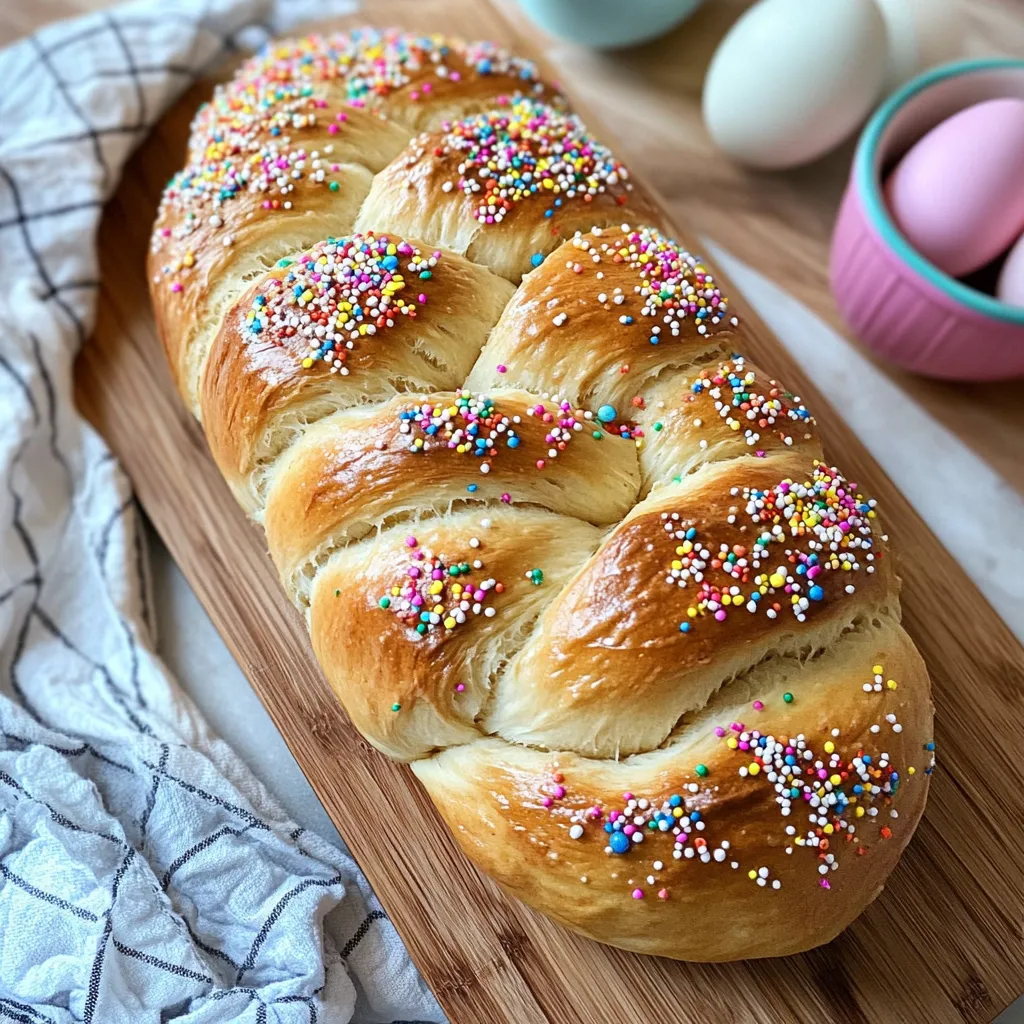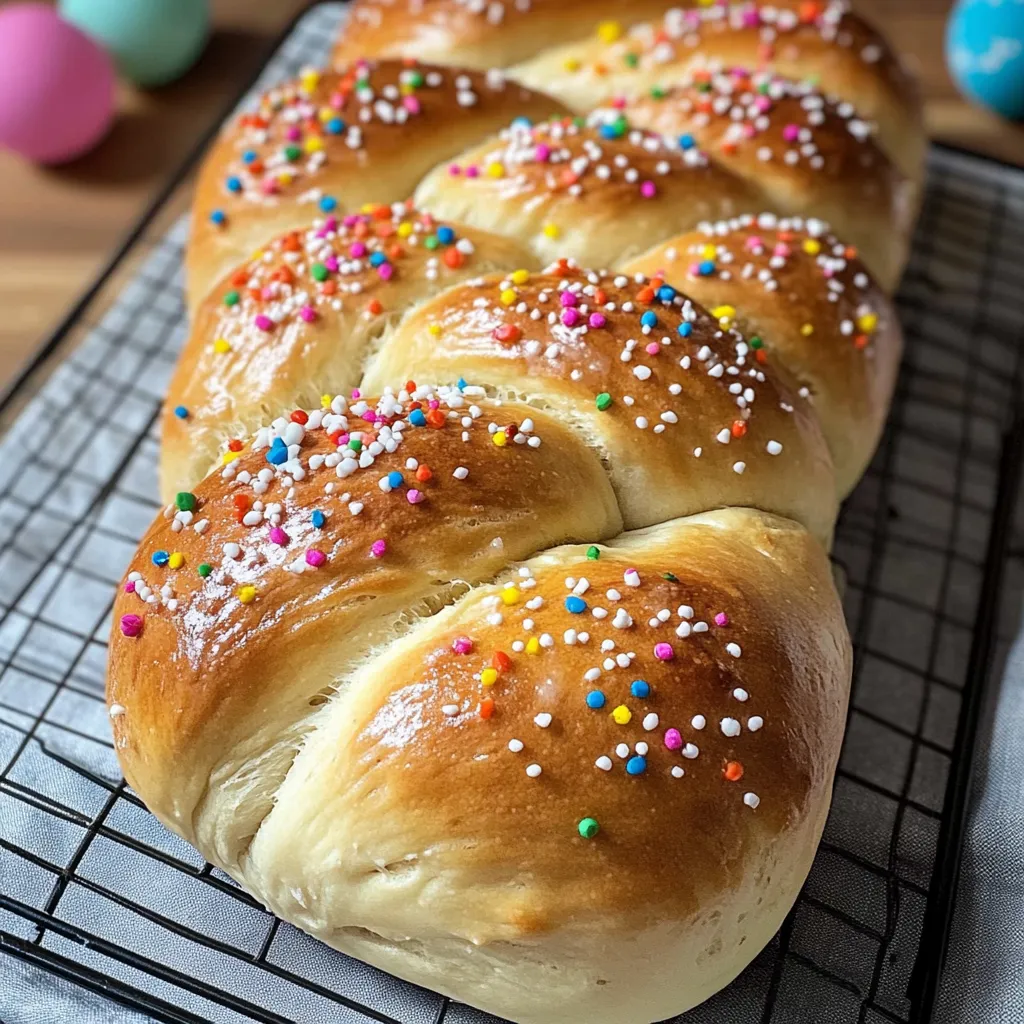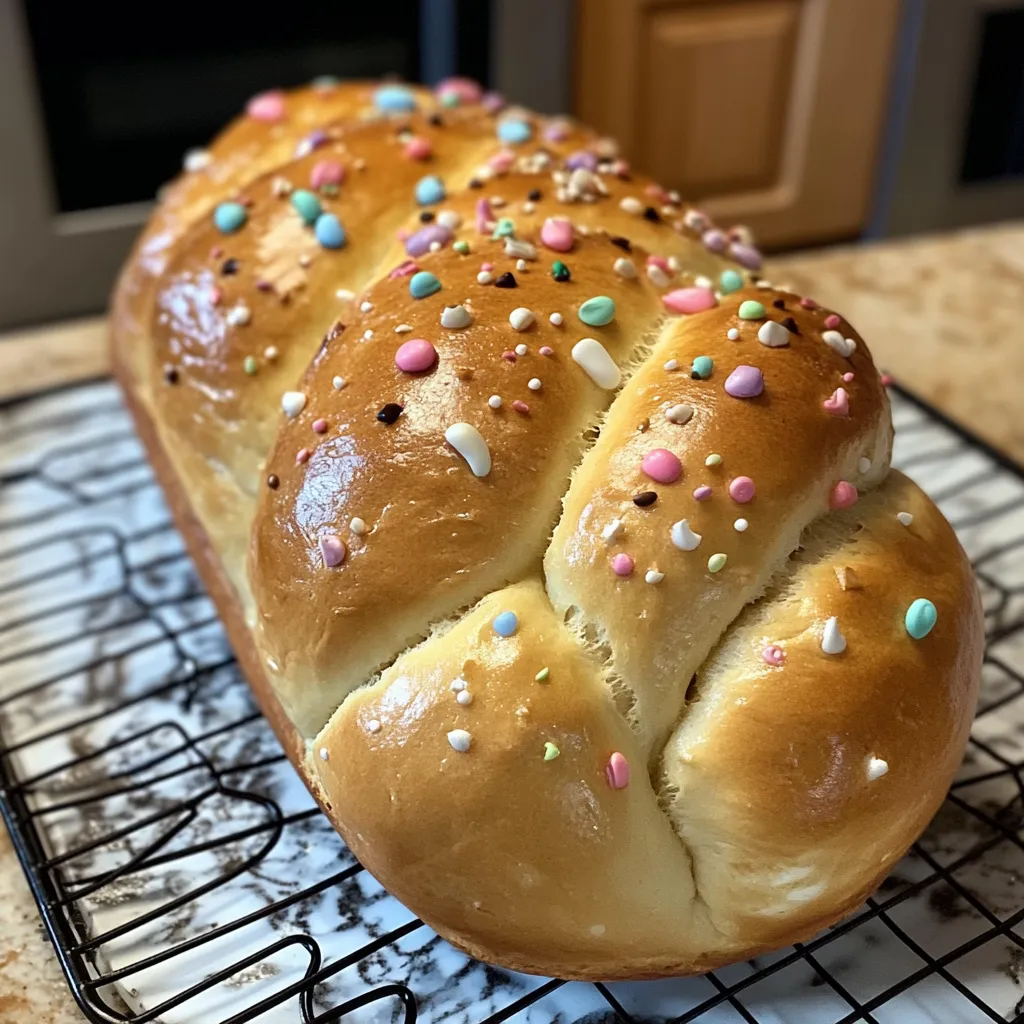 Pin it
Pin it
Get ready to wow your Easter gathering with this deliciously soft and sweet bread tradition. The buttery crumb and hint of vanilla will make this a standout centerpiece that everyone will reach for during your holiday meal.
The first time I whipped up this Easter bread was right after getting married and hosting our first big family get-together. My mother-in-law's eyes lit up after one bite, and just like that, we started a family custom that's stuck around year after year.
What You'll Need
- Active dry yeast: Gets everything rising and creates that wonderful fluffy inside
- Warm milk: Kicks off the yeast action and adds a nice richness
- Sugar: Wakes up the yeast and brings just enough sweetness to the bread
- All purpose flour: Builds the foundation; grab unbleached if you can
- Salt: Boosts the overall taste and helps strengthen the dough
- Unsalted butter: Gives that melt-in-your-mouth quality; European types work amazingly
- Egg: Helps with structure and that sunny color; farm-fresh is a nice touch
- Vanilla extract: Adds that cozy flavor note; stick with real instead of artificial
Making Your Easter Bread
- Wake Up The Yeast:
- Mix milk that's about 110°F with the yeast and sugar in a big bowl. The milk should just feel warm on your finger, not hot. Let it sit quietly for 5 minutes until it gets foamy and smells yeasty – that means your yeast is good to go.
- Mix Your Dough:
- Dump the flour and salt into your yeast mixture and pour in your melted butter. Mix it all together until you get a rough-looking dough. You'll notice it starting to pull away from the bowl sides but looking pretty rustic at this point.
- Work The Dough:
- Knead on a lightly floured countertop for a full 10 minutes. Don't skimp on this part – it builds the structure that makes your bread amazing. You'll know it's ready when it feels smooth and bounces back when you poke it.
- Let It Grow:
- Put your kneaded dough in an oiled bowl, flip it once so it's coated all over, and cover with a kitchen towel. Find a cozy spot without drafts for about an hour. You want it to puff up and double in size.
- Give It Shape:
- Gently push down on the risen dough to get rid of air bubbles and shape it into a nice round loaf. Set it on a parchment-lined baking sheet and if you want, brush with beaten egg and add fun Easter decorations like colored eggs or candy sprinkles.
- Bake It Up:
- Pop it in a 350°F preheated oven for about 35-40 minutes. You'll know it's done when it turns lovely golden brown and sounds hollow when you tap the bottom. Let it cool at least half an hour before cutting into it so it can set up properly.
 Pin it
Pin it
Every time I bake this bread, I think about my grandma who made similar treats each Easter season. She showed me how to add vanilla, which wasn't part of her old recipe but became our little family secret that sets this bread apart.
Keeping It Fresh
Your Easter bread will stay good at room temp in a sealed container or wrapped up in plastic for about 3 days. It keeps surprisingly well, especially if you warm up the slices a bit before eating. If you want it to last longer, wrap it tightly and freeze for up to 3 months. Let it thaw completely before serving, or just pop frozen slices in the toaster for a quick snack.
Fun Twists
Take this simple recipe up a notch with some creative additions. Try mixing in golden raisins or dried cranberries when you're doing the final knead for little bursts of sweetness. Want more aroma? Grate in some lemon or orange peel to the dough. Many families press brightly colored hard-boiled eggs into the top before baking for a show-stopping look that kids absolutely love.
Ways To Enjoy It
This Easter bread really shines when served alongside savory brunch items like egg bakes or sliced ham. Cut thick slices and spread with honey butter for something really special. Want a dessert option? Toast it up and top with mascarpone and some fresh berries. Don't forget that any leftover bread makes incredible French toast the next day – turning yesterday's bread into tomorrow's fancy breakfast.
 Pin it
Pin it
Frequently Asked Questions
- → Is instant yeast okay instead of active dry?
Yes, you can swap instant yeast for active dry yeast. Just skip the proofing step and mix it with your dry stuff right away.
- → How do I tell if the dough has risen enough?
When it doubles in size and your finger poke leaves a mark, it’s ready to go.
- → Can I put toppings on the loaf?
Definitely! Add sesame seeds, almond slivers, or brush it with egg for a shiny glaze.
- → What’s the best way to keep this loaf fresh?
Wrap it tight with plastic or keep it in an airtight container. It’ll stay soft for a good three days at room temperature.
- → What pairs well with this loaf?
It tastes amazing with butter, fruit jam, or savory spreads like cream cheese.
